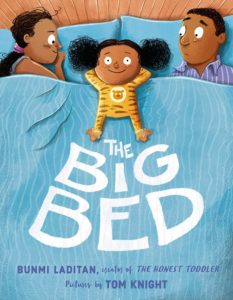This month’s PB creator interview is with Sarasota author Dianne Ochiltree. She’s a writing coach, freelance editor, workshop presenter, and award-winning author of books for the very young. She notes that her family’s home “was filled to the rafters with books, books, books,” and that their home “was populated by a parade of pets, from guppy to puppy, as well as the stray animals Dianne had a habit of rescuing.” Talk about the perfect environment for raising a writer!
Dianne’s many published books include such titles as Molly, by Golly!, It’s a Seashell Day, and Ten Monkey Jamboree.
I’ll let you in on something—I know Dianne well. She recently did a well-received visit to my Writing Picture Books class at Ringling College, and she’s also in my SCBWI critique group where we work on … wait for it … picture books! In short, I KNEW she’d be great for an OPB interview, but my hope was to keep her around until something went sideways and I needed someone completely trustworthy and dependable to save the day in the eleventh hour.
I couldn’t wait. So here’s Dianne. Enjoy!
Website: www.dianneochiltree.com
Facebook: www.facebook.com/dianne.ochiltree
Twitter: twitter.com/WriterDi
LinkedIn: www.linkedin.com/in/dianne-ochiltree-54381118/
RVC: What was your first big break in publishing, and what lessons did it offer you?
DO: The path to publication of my first book for kids, Cats Add Up! was full of 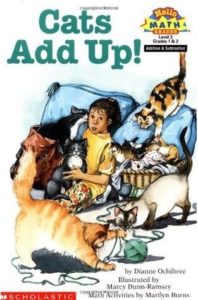 good lessons. A title in the “Hello, Reader!” softcover series from Scholastic, it was acquired directly as the result of attending a children’s publishing conference and making networking connections there. In this case, it was the RUCCL One-on-One Conference at Rutgers University, in the mid-1990s, when I first entered the field of children’s writing. For this conference, writers are accepted on the merit of writing samples sent with the application, because part of the program is a session in which you, and a mentor, focus privately on your writing or artwork. I was thrilled to be accepted and even more excited on that day when I learned my mentor would be Paula Danziger. Paula liked my WIP (work in progress) about counting cats and she made helpful editorial suggestions, including the thought that it might be revised to be a potential title in Scholastic’s “Hello, Reader!” Series.
good lessons. A title in the “Hello, Reader!” softcover series from Scholastic, it was acquired directly as the result of attending a children’s publishing conference and making networking connections there. In this case, it was the RUCCL One-on-One Conference at Rutgers University, in the mid-1990s, when I first entered the field of children’s writing. For this conference, writers are accepted on the merit of writing samples sent with the application, because part of the program is a session in which you, and a mentor, focus privately on your writing or artwork. I was thrilled to be accepted and even more excited on that day when I learned my mentor would be Paula Danziger. Paula liked my WIP (work in progress) about counting cats and she made helpful editorial suggestions, including the thought that it might be revised to be a potential title in Scholastic’s “Hello, Reader!” Series.
RVC: That’s amazing. I’ve heard Paula was terrific that way.
DO: I agree! Paula introduced me later in the day to an editor at Scholastic who, while not associated with the series, promised to read my submission when it was ready, and furthermore, to pass it along to the right department should he feel it was a good fit. I left the conference feeling happy that my work was good enough to get professional notice, but never believing that events would unfold in the way they did. I revised and submitted.
Months passed. I figured things had just not worked out with that submission.
However, one day the phone rang with an offer to publish my cat story with Scholastic. Since then, I’ve certainly believed in the power of attending conferences and networking widely. You never know exactly which connection might give you an opportunity to submit work and gain publication at some future date.
RVC: If conferences are your thing, then surely SCBWI been a part of your career.
DO: Absolutely! One of the first things I did when transitioning from marketing/advertising/PR copywriting to writing for children was to join SCBWI. I became active in my local chapter and made it part of my learning curve to attend every neighboring or national SCBWI conference possible. I gained a lot of knowledge in a short space of time from those speakers, workshops, and critique sessions in the early days. SCBWI also offers a ton of great information and services online. I made good use of those, too. Still do!
RVC: Let’s talk about your picture books in specific. Many of them—like Pillow Pup and It’s a Firefly Night—use rhyme quite effectively. Where do most writers go wrong with rhyme? And why?
DO: Writers may go wrong with rhyming text in these common situations: when sentences are altered to unnatural or awkward structures simply to suit a rhyme scheme; when story details are inserted or ordered simply to suit a rhyme scheme; when plot action is expanded unnecessarily or repetitively simply to suit a rhyme scheme. In all cases, the narrative choices made by the author were done in service of the rhyme or rhythm, and not the story structure.
Writers owe it to their readers to ask early and often: does this serve the story? Rhyming or not, STORY is job number one!
Many “rhyming” writers start out trying to be Dr. Seuss. While Dr. Seuss may be the most famous rhyming children’s book author, his style isn’t for everyone. While it’s not wise to imitate someone else, it IS smart to study other authors who effectively use rhyme and learn from these mentor texts just how it works. It often boils down to juicy words judiciously applied.
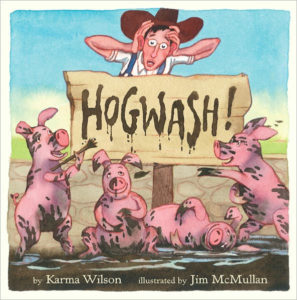 Some of my favorite authors writing text in rhyme are Karma Wilson, Corey Rosen Schwartz, Douglas Florian, and Anna Dewdney. These writers consistently use rhyme to good effect. Here’s an example of an effective rhyming picture book text, from Karma Wilson’s Hogwash!, illustrated by Jim McMullan, which opens this way:
Some of my favorite authors writing text in rhyme are Karma Wilson, Corey Rosen Schwartz, Douglas Florian, and Anna Dewdney. These writers consistently use rhyme to good effect. Here’s an example of an effective rhyming picture book text, from Karma Wilson’s Hogwash!, illustrated by Jim McMullan, which opens this way:
He washed the horses, ducks and cows
The goats, the cats and dogs.
Everything went dandy…
Until the farmer reached his hogs.
“No hogwash for us today.
Pigs love dirt—so go away!”
Those rhythmic lines rhyme and are fun to read aloud, yes? But they are also an effective setup for the story to follow. We know the setting (farm); the main character (the farmer); the cast of characters (horses, ducks, cows, goats, cats, dogs, and pigs); and the plot problem to be solved (the pigs do not want to be washed today and plan to resist the farmer’s every attempt to hose them down). All this story structure in less than 35 words, and it reads like a song.
RVC: In terms of being able to create rhythmic lines that are fun to read—and who doesn’t love fun-to-read rhymes, right?—what do you recommend people do beyond read good examples from published books? Classes? How-to books? Something else?
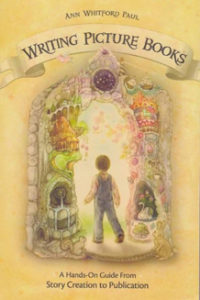 DO: I suggest going one step beyond reading good examples of published books: actually typing out the text for later study. Without the distraction of the illustrations, it’s easier to study the structure and techniques used by the author to build story, setting, and characterization with words alone. My favorite craft book for picture book writers is Writing Picture Books: A Hands-On Guide from Story Creation to Publication, by Ann Whitford Paul.
DO: I suggest going one step beyond reading good examples of published books: actually typing out the text for later study. Without the distraction of the illustrations, it’s easier to study the structure and techniques used by the author to build story, setting, and characterization with words alone. My favorite craft book for picture book writers is Writing Picture Books: A Hands-On Guide from Story Creation to Publication, by Ann Whitford Paul.
There are online groups and courses focusing on picture book writing—too many to mention them all. But my favorite is Julie Hedland’s 12 x 12 Picture Book Challenge, designed to motivate writers to write 12 picture book drafts in 12 consecutive months. Members participate in an exclusive forum and a very active Facebook group where they can ask questions, find critique partners, and share their journeys to getting their books published.
To circle back to SCBWI membership, it’s important to use the online and in-person networking opportunities to find a real, live critique group of other picture book writers who are committed to improving their craft. There’s nothing like immediate feedback from peers, or group brainstorming on a troubled WIP, to elevate your writing skills.
RVC: Do you have a daily writing routine or do you have less scheduled strategy to find writing time?
DO: Because of the multi-tiered nature of my life these days—I’ve added writing coach, freelance editor, yoga instructor, and wife of a retired-business-man-turned-rock-musician to the mix—my old, predictable writing routine of the past isn’t always possible. Instead of working in larger, pre-planned blocks of time, I now work in smaller, spontaneous chunks of time. I keep a notebook handy so I can jot down ideas, phrases, etc. as I travel through my day. I’ve found using pen and paper to write bits of narrative (instead of on the computer keyboard at my desk) has changed my writer’s voice somewhat, making my storyline and words more heart-driven. The urgency of writing what I can when I can has eliminated some of the “narrative circling” that has been my creative bad habit. I find I am ALWAYS thinking of the approach to plot and characterization and theme when I must be away from the keyboard physically these days. It’s helped me focus quickly on the WIP when I finally get my B.I.C. (“butt in chair”) as Jane Yolen so famously advises us all to do.
RVC: Tell me three words that you hope come to a reader’s mind when they think of your picture books.
DO: “Read it again.”
RVC: Thanks so much, Dianne!


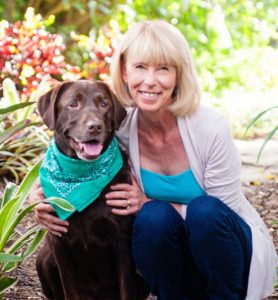
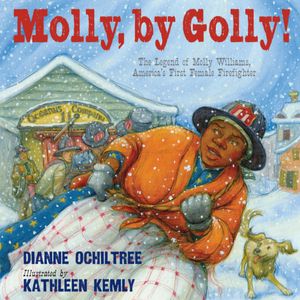
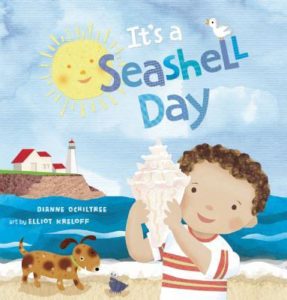
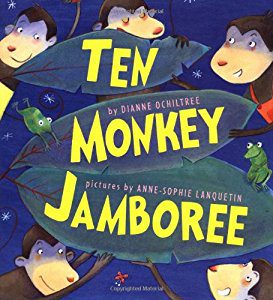

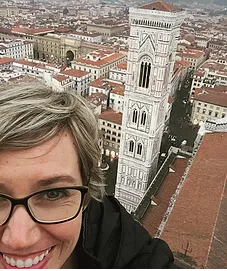 A Professor of Illustration at
A Professor of Illustration at 




 This month’s
This month’s 



